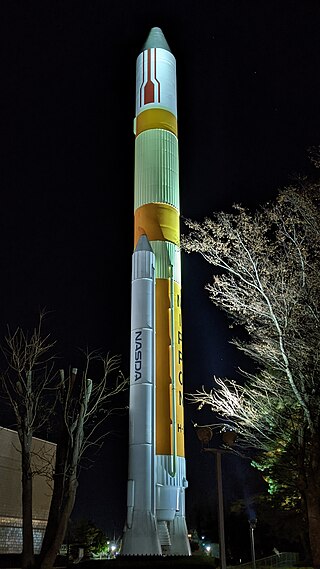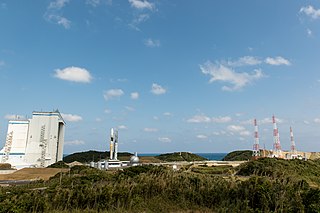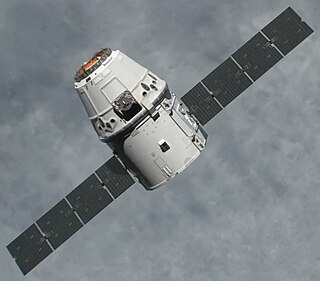
An expendable launch system is a launch vehicle that can be launched only once, after which its components are either destroyed during reentry or discarded in space. ELVs typically consist of several rocket stages that are discarded sequentially as their fuel is exhausted and the vehicle gains altitude and speed. As of 2024, less and less satellites and human spacecraft are launched on ELVs in favor of reusable launch vehicles. However, there are many instances where a ELV may still have a compelling use case over a reusable vehicle. ELVs are simpler in design than reusable launch systems and therefore may have a lower production cost. Furthermore, an ELV can use its entire fuel supply to accelerate its payload, offering greater payloads. ELVs are proven technology in widespread use for many decades.

The Japan Aerospace Exploration Agency (JAXA) is the Japanese national air and space agency. Through the merger of three previously independent organizations, JAXA was formed on 1 October 2003. JAXA is responsible for research, technology development and launch of satellites into orbit, and is involved in many more advanced missions such as asteroid exploration and possible human exploration of the Moon. Its motto is One JAXA and its corporate slogan is Explore to Realize.

The Tanegashima Space Center (TNSC) is the largest rocket-launch complex in Japan with a total area of about 9.7 square kilometers. It is located on the southeast coast of Tanegashima, an island approximately 40 kilometers (25 mi) south of Kyushu. It was established in 1969 when the National Space Development Agency of Japan (NASDA) was formed, and is now run by JAXA.

H-IIB (H2B) was an expendable space launch system jointly developed by the Japanese government's space agency JAXA and Mitsubishi Heavy Industries. It was used to launch the H-II Transfer Vehicle cargo spacecraft for the International Space Station. The H-IIB was a liquid-fueled rocket, with solid-fuel strap-on boosters and was launched from the Tanegashima Space Center in southern Japan. H-IIB made its first flight in 2009, and had made a total of nine flights through 2020 with no failures.

The H-II (H2) rocket was a Japanese satellite launch system, which flew seven times between 1994 and 1999, with five successes. It was developed by NASDA in order to give Japan a capability to launch larger satellites in the 1990s. It was the first two-stage liquid-fuelled rocket Japan made using only technologies developed domestically. It was superseded by the H-IIA rocket following reliability and cost issues.
Information Gathering Satellite are the satellites of the Japanese spy satellite program. It was started as a response to the 1998 North Korean missile test over Japan. The satellite program's main mission is to provide early warning of impending hostile launches in the region. This program is under the direct control of the cabinet. All Information Gathering Satellites have been launched by H-IIA rockets from the Tanegashima Space Center.

Castor is a family of solid-fuel rocket stages and boosters built by Thiokol and used on a variety of launch vehicles. They were initially developed as the second-stage motor of the Scout rocket. The design was based on the MGM-29 Sergeant, a surface-to-surface missile developed for the United States Army at the Jet Propulsion Laboratory.

Several significant events in spaceflight occurred in 2009, including Iran conducting its first indigenous orbital launch, the first Swiss satellite being launched and New Zealand launching its first sounding rocket. The H-IIB and Naro-1 rockets conducted maiden flights, whilst the Tsyklon-3, Falcon 1 and Ariane 5GS were retired from service. The permanent crew of the International Space Station increased from three to six in May, and in the last few months of the year, Japan's first resupply mission to the outpost, HTV-1, was conducted successfully.

The LE-5 liquid rocket engine and its derivative models were developed in Japan to meet the need for an upper stage propulsion system for the H-I and H-II series of launch vehicles. It is a bipropellant design, using LH2 and LOX. Primary design and production work was carried out by Mitsubishi Heavy Industries. In terms of liquid rockets, it is a fairly small engine, both in size and thrust output, being in the 89 kN (20,000 lbf) and the more recent models the 130 kN (30,000 lbf) thrust class. The motor is capable of multiple restarts, due to a spark ignition system as opposed to the single use pyrotechnic or hypergolic igniters commonly used on some contemporary engines. Though rated for up to 16 starts and 40+ minutes of firing time, on the H-II the engine is considered expendable, being used for one flight and jettisoned. It is sometimes started only once for a nine-minute burn, but in missions to GTO the engine is often fired a second time to inject the payload into the higher orbit after a temporary low Earth orbit has been established.

Yoshinobu Launch Complex (LC-Y) is a rocket launch site at the Tanegashima Space Center on Tanegashima. The site and its collection of facilities were originally built for the H-II launch vehicle and later used for H-IIA, H-IIB and H3 launches.

Kounotori 2, also known as HTV-2, was launched in January 2011 and was the second flight of the Japanese H-II Transfer Vehicle to resupply the International Space Station (ISS). It was launched by the H-IIB Launch Vehicle No. 2 manufactured by Mitsubishi Heavy Industries (MHI) and JAXA. After the supplies were unloaded, Kounotori 2 was loaded with waste material from ISS, including used experiment equipment and used clothes. Kounotori 2 was then unberthed and separated from the ISS and burned up upon reentering the atmosphere on 30 March 2011.

The year 2012 saw a number of significant events in spaceflight. In May and October, the first Commercial Orbital Transportation Services resupply missions took place, during which the SpaceX Dragon became the first private spacecraft to dock with the International Space Station (ISS). In June, China launched the crewed Shenzhou 9 orbital mission, and North Korea achieved its first successful orbital launch in December. 2012 also saw China's first successful asteroid exploration mission, and the landing of NASA's Curiosity rover on Mars. The Vega and Unha-3 rockets made their maiden flights in 2012, while the Proton-K made its last.
Hayato, known before launch as KSAT, or the Kagoshima Satellite, is a Japanese satellite which was launched on 20 May 2010. It is a student-built spacecraft, which is operated by Kagoshima University, and is being used for technology demonstration and atmospheric research. The satellite is a single unit CubeSat, and carries equipment to study water vapour in the Earth's atmosphere, microwave imagery and spacecraft communication.
Negai☆″ is a Japanese satellite which launched in May 2010. It is a student-built spacecraft, which will be operated by Soka University, and is intended to be used for technology demonstration. The satellite is a single unit CubeSat, and will be used to test a field programmable gate array in orbit. As part of an outreach programme, it will carry the names of selected children, along with wishes they have made. The satellite will return images of the Earth, which will be given to the participating children.

Kounotori 3, also known as HTV-3, was the third flight of the Japanese H-II Transfer Vehicle. It was launched on 21 July 2012 to resupply the International Space Station (ISS) aboard the H-IIB Launch Vehicle No. 3 manufactured by Mitsubishi Heavy Industries (MHI) and JAXA. Kounotori 3 arrived at the ISS on 27 July 2012, and Expedition 32 Flight Engineer and JAXA astronaut Akihiko Hoshide used the International Space Station's Canadarm2 robotic arm to install Kounotori 3, to its docking port on the Earth-facing side (nadir) of the Harmony module at 14:34 UTC.

The Epsilon Launch Vehicle, or Epsilon rocket, is a Japanese solid-fuel rocket designed to launch scientific satellites. It is a follow-on project to the larger and more expensive M-V rocket which was retired in 2006. The Japan Aerospace Exploration Agency (JAXA) began developing the Epsilon in 2007. It is capable of placing a 590 kg payload into Sun-synchronous orbit.

The H3 Launch Vehicle is a Japanese expendable launch system. H3 launch vehicles are liquid-propellant rockets with strap-on solid rocket boosters and are launched from Tanegashima Space Center in Japan. Mitsubishi Heavy Industries (MHI) and JAXA are responsible for the design, manufacture, and operation of the H3. The H3 is the world's first rocket to use an expander bleed cycle for the first stage engine.
SRB-A is a series of Japanese solid-fueled rocket booster manufactured by IHI Corporation for use on the H-IIA, H-IIB, and Epsilon rockets.


















